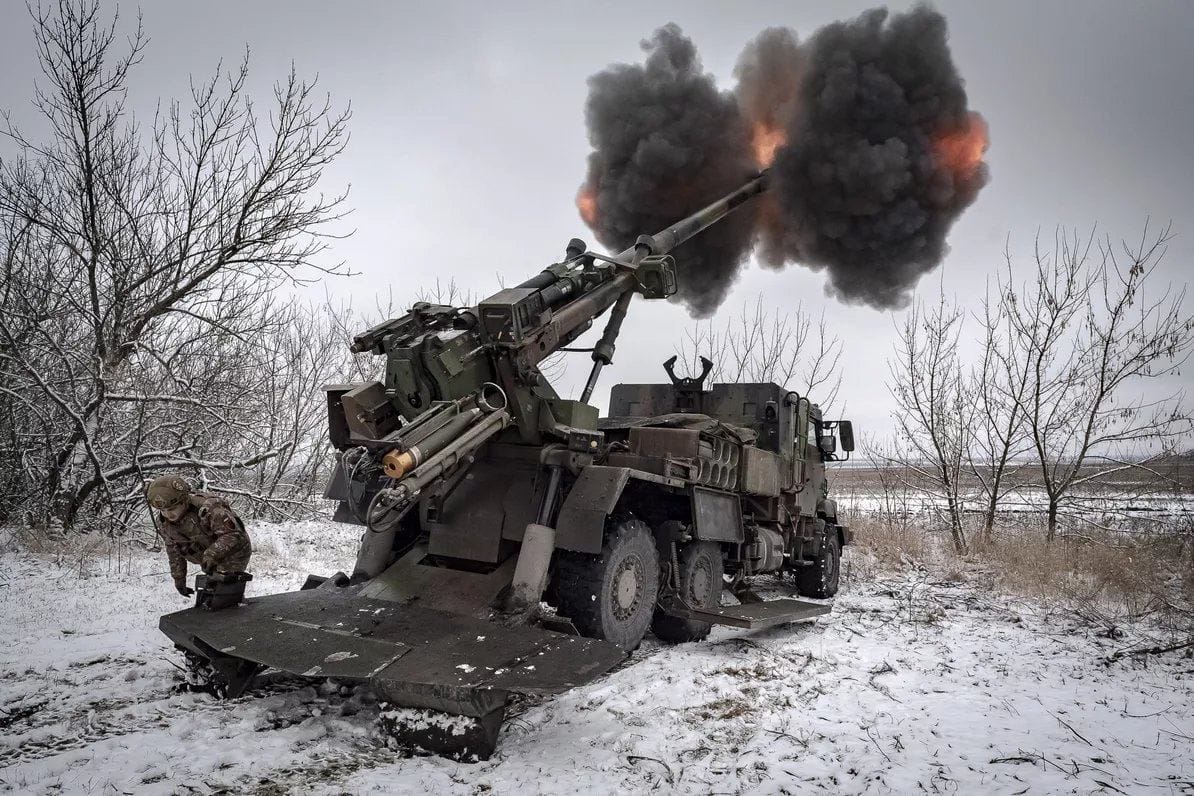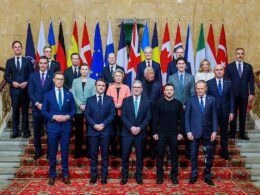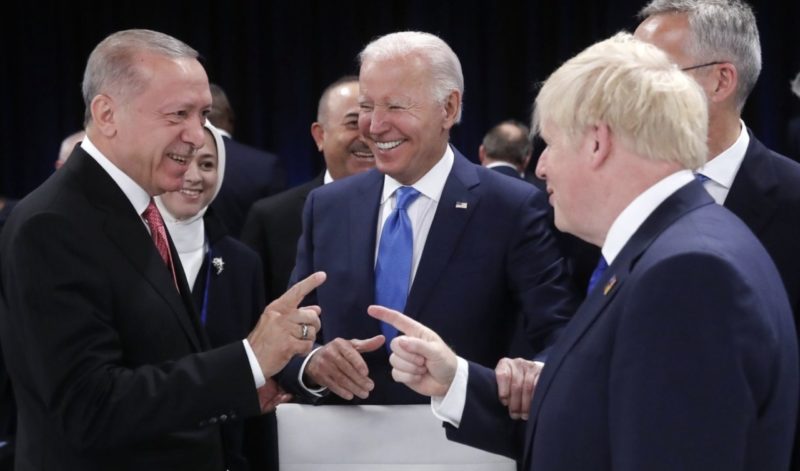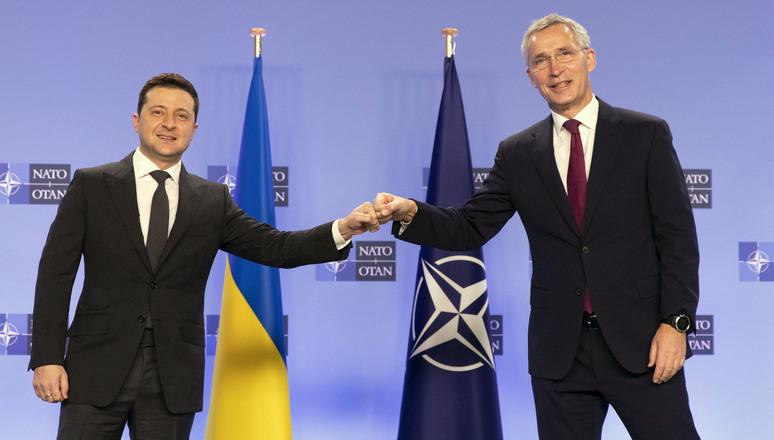Avril Haines, Director of National Intelligence of the US, thinks that the war in Ukraine has become a grinding attrition war in which neither side has a definitive military advantage. She believes President Putin will likely carry on, possibly for years.
The assessment is highly thought-provoking.
Why? She isn’t only assessing Russian strategy and ability to reach its strategic aim and objectives but also Ukraine’s and its partners' ability to counter Russian aggression.
Decades of defense underfunding in NATO countries have led to unpreparedness for Russia's war
Despite the economic and industrial might of the US and Europe and the military power of NATO, they have shown themselves unprepared for a full-scale war in Europe. This has defined the scope and scale of their defense aid to Ukraine.
Due to the classification, one will not find the exact NATO Level of Ambition in open sources. According to the 2010 strategic concept, however, the Alliance is tasked to maintain the ability to sustain concurrent major joint operations (plural) and several smaller operations (again, plural) for collective defense and crisis response. Crisis response is part of its second core essential task (Crisis Management), which until the Madrid summit in June 2022, included the task to:
“…help manage developing crises that have the potential to affect Alliance security, before they escalate into conflicts; to stop ongoing conflicts where they affect Alliance security.”
The 2010 strategic concept - entitled Active Engagement, Modern Defence – established an ambitious level of effort given the member states lack of investment in NATO. The great majority did not meet their commitment to allocate 2% of GDP for defense budgets four years after they committed to do just that.
This strategic statement was immediately put to the test with the NATO operation in Libya. NATO demonstrated a core principle of the new strategic concept by executing aggressive crisis management.
In the words of Dean A. Nowowiejski (in 2013):
“Active Endeavor provided air cover over Libya to protect citizens and enforced an arms embargo on the high seas to prevent resupply of weapons to the regime. Libya established a new realm of the possible with the new strategic concept in place and reaffirmed the Alliance’s stated purpose of reaching beyond its own territory proper to ensure the lasting security of the member states.
But the operation simultaneously revealed significant flaws in capability that have forced a reconsideration of the way the Alliance will develop resources in the future. Since Libya, the growing pressure of the Eurozone crisis leads to questions about the viability of the strategic concept itself given the limited focus it gave to resource use. How will the level of ambition in the concept be met by members who are giving less, not more, to the needs of the Alliance? “
Nowowiejski concluded that NATO members would need to amend their level of ambition. He predicted that the economic realities would soon dictate the Alliance to reduce its Level of Ambitions.
As a consequence, NATO was forced last year to reduce its level of ambition in the face of Russian aggression. It stepped away from a major joint operation the member states had agreed to resolve, inadvertently raising the question of whether the Alliance is at all able to meet its defined Level of Ambitions.
Western defense industries unable to meet the urgent need for arms for Ukraine
The present status of the American and European defense industries – or rather, their inability to meet the urgent need for weapons and ammunition anytime soon, is another glaring consequence of decades of underfinancing of the defense sector.
According to a report by the Center for Strategic and International Studies (CSIS), American factories' current production levels may not be enough to prevent the depletion of critical stockpiles of supplies being provided to Ukraine. Despite accelerated production rates, it could take up to five years to replenish the inventory of highly demanded items such as Javelin antitank missiles and Stinger surface-to-air missiles.
The situation is similarly concerning in Europe. Germany, amidst plans for a significant military expansion, is reportedly equipped with enough ammunition to last only two days of fighting. In a recent war game, British stocks lasted for a mere eight days, highlighting the importance of strategic planning and resilient supply chains for critical military equipment and supplies.
Why Ukraine has not achieved a military advantage
This helps explain why Ukraine hasn’t achieved a military advantage.
- Firstly, the West did not use the opportunity to help rebuild its Armed Forces and, consequently, its deterrence during the first 8 years of the war.
- Secondly, NATO members did not recommit to meeting their pledge to use 2% of GDP for defense budgets and close existing vulnerabilities when the war started in 2014. Lack of sustainability and critical gaps in their force structure are just some of the most obvious weaknesses.
- Thirdly, the US and Europe have not provided Ukraine with the tools it needs to evict Russian forces. To liberate all occupied territories, it needs much more of what it already has received, as well as weapons its partners refuse to provide (long-range fire, combat aircraft, attack helicopters, and a navy).
Is the West settling for a grinding attrition war?
Starting with the latter option, and due to the identified structural weaknesses in the force structures, capability gaps, lack of sustainability, and the defense industries' inability to ramp up production in the short term, the West might be settling for a grinding attrition war in which neither Ukraine nor Russia will be defeated.
Russia might be falling victim to its own hybrid war: Having messed with the heads of key policy and decision makers and created the fear of a nuclear confrontation, the US and Europe might have come up with a strategy that reduces the risk of just that.
The West might be making sure that the war will not constitute an existential threat to the survival of the Russian Federation. It is not seeking a decisive battle or a military defeat for the Russian Armed Forces. Russia will simply be worn down until the point where it either seeks negotiations or President Putin suddenly finds himself unemployed when the Russian elite decides to break the present impasse.
The US and Europe might be trying to create a strategic collapse similar to the downfall of the USSR. The attrition war – the combined use of both economy, energy, information, diplomacy, and military power – will gradually deplete Russian resources and the ability to wage war. Russia will still fail. It will, however, be a long-term, slow, and “painful” strangulation until its total collapse (or the collapse of the present regime).
Three flaws of the attrition war strategy
If this is indeed the strategy, it has some potential flaws.
- Firstly, the West does not have the initiative. It is presently reacting to Russian escalations. The US and Europe are not shaping the battlefield. This means that the strategic deliberations will change the moment China decides to support Russia militarily.
- Secondly, the US and Europe are not prepared for a protracted war. The challenges they are facing because of structural weaknesses – including the defense industries – are only a part of the problem. The Russian hybrid war in Europe – including its full-scale war in Ukraine – has resulted in a “tsunami of ripple effects,” including the loss of energy and food security, increased poverty and hunger, recession, inflation, and increased costs of living; as well as the potential repercussions, including the increased risk of demonstrations, riots, extremism, and social unrest at the cost of global political stability.The political landscape in the USA and Europe will - as in the 1930s – most likely be changed by political forces seeking to exploit the voters' frustration. We have already experienced shifts in the political landscape (France, Sweden, and Italy) that are likely to spread the longer the war continues.
- Thirdly, it also means that Ukraine will continue to suffer.
https://euromaidanpress.com/2023/03/11/russias-war-has-caused-311-billion-of-direct-damage-to-ukraine/
This brings me back to the first option of how to read the assessment by the Director of National Intelligence. It might be a warning to Congress: The US and Europe aren’t doing enough to change the military balance and risk a war they are ill-prepared to meet -- a protracted war
.
What could fundamentally shift the military balance
In my humble opinion, and recognizing the discord within NATO and its inability to act according to its late Level of Ambition, a coalition of the willing based on key members of the Alliance could change the military balance in weeks if it so decided. It “only” needs to bring the full scope of its military power to bear.
They would present the Russian Federation with a dilemma: Abort the war against one or face the war against thirty-one. Withdraw, or risk losing your conventional forces to a technologically superior military alliance.
More than one year after the full-scale war started, this option is still not on the table. The West remains committed to a “no boots on the ground” (or in the air and at sea) strategy.
It's high time to commit to the security and stability of all NATO members, as some of them are already committed to defending themselves against Russia in Ukraine.
Related:
- Russia’s war with Ukraine affects billions. NATO could end it in a moment.
- The eight signs of discord within NATO
- Why a humanitarian intervention in Ukraine is in NATO’s interest





